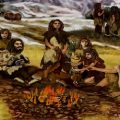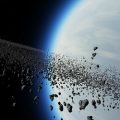PTE考生目前最大的问题之一就是练习题缺乏。除了有限的基本官方书(PLUS,Testbuilder, OG)之外,就没有题了。很多英语基础不是很扎实的同学很难找到练习材料。墨尔本文波雅思PTE培训学校专门为墨尔本,悉尼PTE考生准备了适合PTE听力阅读练习的科学60秒。各位PTE同学可以练习PTE听力中的summarise spoken text和PTE口语中的retell lecture,练习记笔记技巧和复述。废话少说,下面开始:
Face Moon Tells How It Got That Way
听力内容:
60秒科学节目(SSS)是科学美国人网站的一套广播栏目,英文名称:Scientific American – 60 Second Science,节目内容以科学报道为主,节目仅一分钟的时间,主要对当今的科学技术新发展作以简明、通俗的介绍,对于科学的发展如何影响人们的生活环境、健康状况及科学技术,提供了大量简明易懂的阐释。
The dark side of the moon. It’s remote and mysterious. And not just because we can’t see it from Earth. When viewed from space, the moon’s back side looks totally different from its front. Now, researchers think they have a solution to the mystery, which they share in the Astrophysical Journal Letters. [Arpita Roy, Jason T. Wright, and Steinn Sigurðsson, Earthshine on a Young Moon: Explaining the Lunar Farside Highlands]
You may have wondered about the “man in the moon,” that facelike image made by the large flat plains on the lunar surface that faces us. But scientists wonder why the far side doesn’t have comparable features.
According to the new analysis, this asymmetry has to do with how the moon was made. Not long after the Earth formed, a Mars-sized hunk of intergalactic debris smacked into our baby planet, flinging off material that then became the moon. The crash left both bodies boiling hot. But the smaller moon cooled down more quickly than the molten Earth… especially the part that faced the other way.
The minerals on the moon’s cooler side started to precipitate sooner. That head start gave the far side a thicker crust, which is more resistant to the weathering seen on the familiar side: weathering that gives a face character. Even on the moon.
—Karen Hopkin





